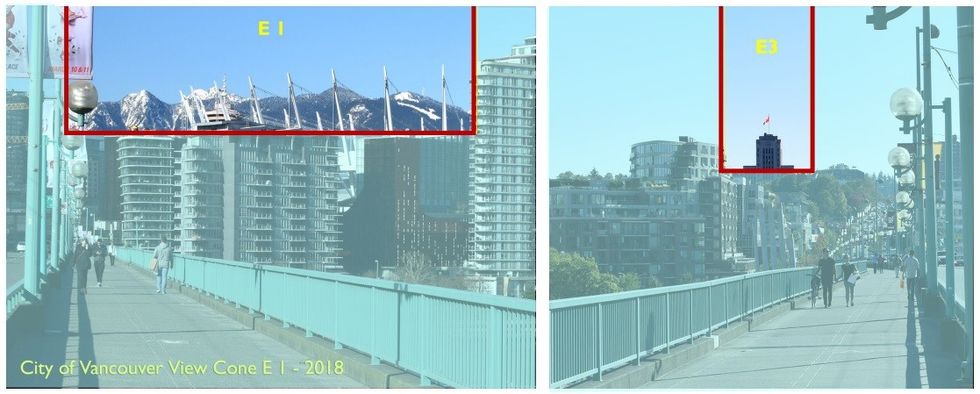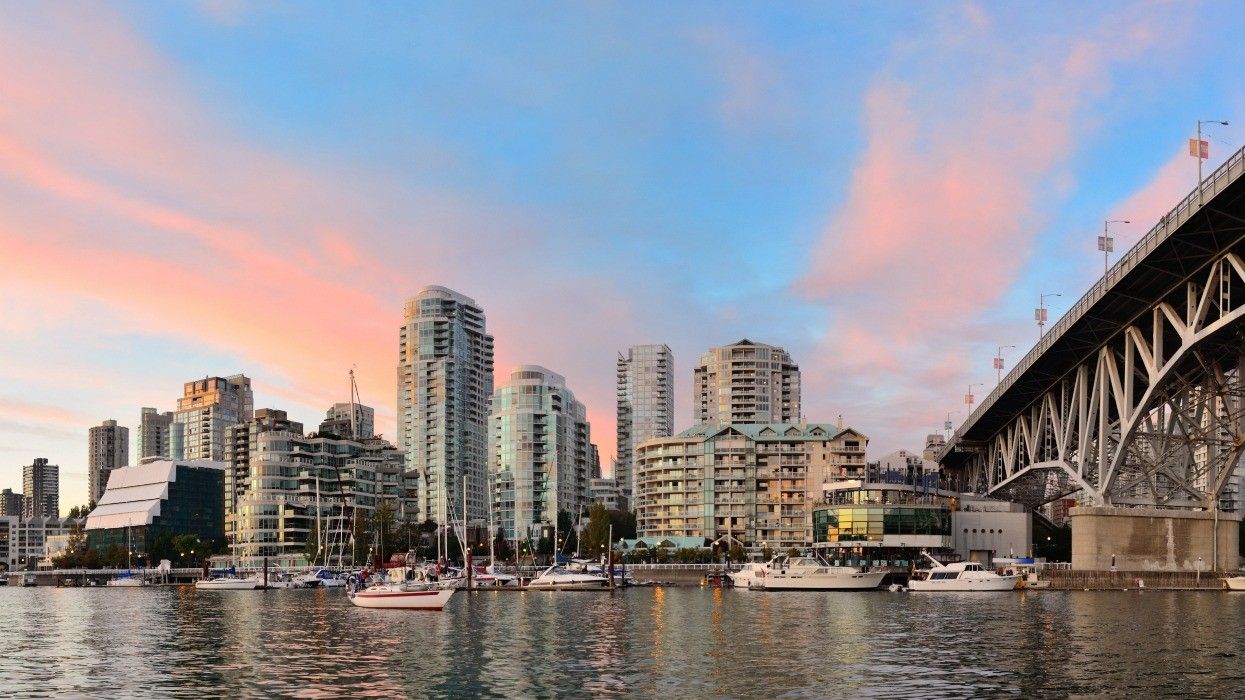On Wednesday, Vancouver City Council approved a significant update to its famous — or infamous, depending on your perspective — view cones policy, sparking a new round of outrage on the longstanding topic.
The view cones policy, also known as the view protection guidelines, was first introduced in 1989 and identified a series of views from specific locations around Vancouver that the City believed had to be preserved, meaning new buildings either had to avoid the area or get creative to avoid obstructing the view.
All of the view cones are facing north and many are indeed unique, allowing clear lines of sight from Queen Elizabeth Park, for example, all the way through downtown Vancouver's sea of buildings and to the North Shore Mountains.
"Vancouver's protected public views, often referred to as 'view cones,' are considered a defining element of Vancouver's brand," said staff in a report to Council. "For residents, visitors and newcomers, these views maintain a vital connection to nature and shape the city's unique identity."
However, as Vancouver's housing crisis has gotten worse and worse, the issue of view cones and whether they are counter-productive has repeatedly come up across various City administrations. Most recently, with the current ABC-supermajority Council, the issue arose after Councillor Peter Meiszner introduced a motion in October 2023 to launch a review of the policy, with an eye on "unlocking housing and economic opportunities."
Last week, City staff returned with their recommendations, which were approved — through repealing the existing policy and introducing a new Public Views Guidelines — by Council this week, on Wednesday, July 10.
Of the 38 pre-existing view cones deriving from 18 origin points, 14 view cones and two origin points were eliminated, bringing the amount of view cones down to 24, with 11 also receiving updates.
The 11 view cones that were updated — narrowed, redefined, or slightly relocated — are as follows.
- A - Alder Terrace
- E2.1 - Cambie Bridge
- G1.1 - Olympic Shipyard Pier
- G1.2 - Olympic Shipyard Pier
- J1.1 - Creekside Park
- J1.2 - Creekside Park
- 9.1 - Cambie Street
- 9.2.1 - Cambie Street
- 20.1 - Granville Street
- 21 - Commercial Drive
- 22 - Main Street

The remaining 13 view cones that were retained were:
- B1 - Charleson Seawall
- B2 - Charleson Seawall
- D - Heather Bay
- H - Olympic Village Plaza
- K - Drake Street
- 3.2.1 - Queen Elizabeth Park
- 3.2.2 - Queen Elizabeth Park
- 3.2.3 - Queen Elizabeth Park
- 3.2.4 - Queen Elizabeth Park
- 10 - Granville Island
- 12.2 - Granville Bridge
- 27.1 - Trout Lake
- 27.2 - Trout Lake

And the 14 view cones that were completely eliminated — primarily because they are already "substantially compromised" — were:
- C1 - Laurel Landbridge
- C2.1 - Laurel Landbridge
- C2.2 - Laurel Landbridge
- E1 - Cambie Bridge
- E2.2 - Cambie Bridge
- E3 - Cambie Bridge
- F1.1 - Choklit Park
- F1.2 - Choklit Park
- F1.3 - Choklit Park
- 12.1 - Granville Bridge
- 3.1 - Queen Elizabeth Park
- 3.2.4a - Queen Elizabeth Park
- 9.2.2 - Cambie Street
- 20.2 - Granville Street

The Impact On Housing
According to a staff presentation to Council, City staff project that the changes will unlock between 8,100,000 and 54,000,000 sq. ft in development capacity across the next 30 years, which could amount to between 15,000 and 75,000 units of housing.
"For residents, visitors, and newcomers, Vancouver's views provide a vital connection to nature and shape our city's unique identity," said Mayor Kim Sim in a press release on Wednesday. "As our city grows, we're taking a balanced approach to updating decades-old policies that will allow our iconic views to evolve as we work to deliver the housing and job space Vancouver needs."
"These changes will allow important public views to evolve with the city, balancing development with the preservation of natural elements to maintain a healthy and attractive urban environment," added Josh White, GM of Planning, Design, and Sustainability.
However, many are also against the changes, saying the City of Vancouver is caving to developers and that what the changes will really do is just privatize the views, making them available only to those who can afford to live in the high-rises that penetrate the lines of sight.
Melody Ma of Save Our Skyline YVR, who has been a consistent advocate for preserving Vancouver's view cones, said on Thursday that the changes were made with "short sightedness" and that Council has "sold off public views meant for generations to enjoy."
"This will not create affordable housing, but it will make a whole bunch of landowners very, very wealthy," added Former CTV News anchor Tamara Taggart.
Those closer to the middle tend to see the benefits of protecting public views as well as the benefits of removing some view cones. Many have pointed out that some of the previous view cones are really not that important or practical in reality.
"We need to protect some views, but it's gotten crazy," said architect James Cheng in a previous interview with STOREYS. "They even have a view cone for somebody walking on the Cambie Bridge... Why do we need a view from one stationary point in the middle of a bridge?"
As with all issues, and particularly so with view cones, it's all a matter of perspective.
- Inside The Broadway Plan Review With Vancouver's Acting Director Of Planning ›
- Josh White On Becoming Vancouver's New GM Of Planning ›
- Vancouver Outlines Housing Requirements In New TOA Rezoning Policy ›
- Vancouver Proposing Fast-Track Policy For Social Housing Projects ›
- Portions Of Broadway And Cambie Corridors To Be Pre-Zoned For More Density ›





















